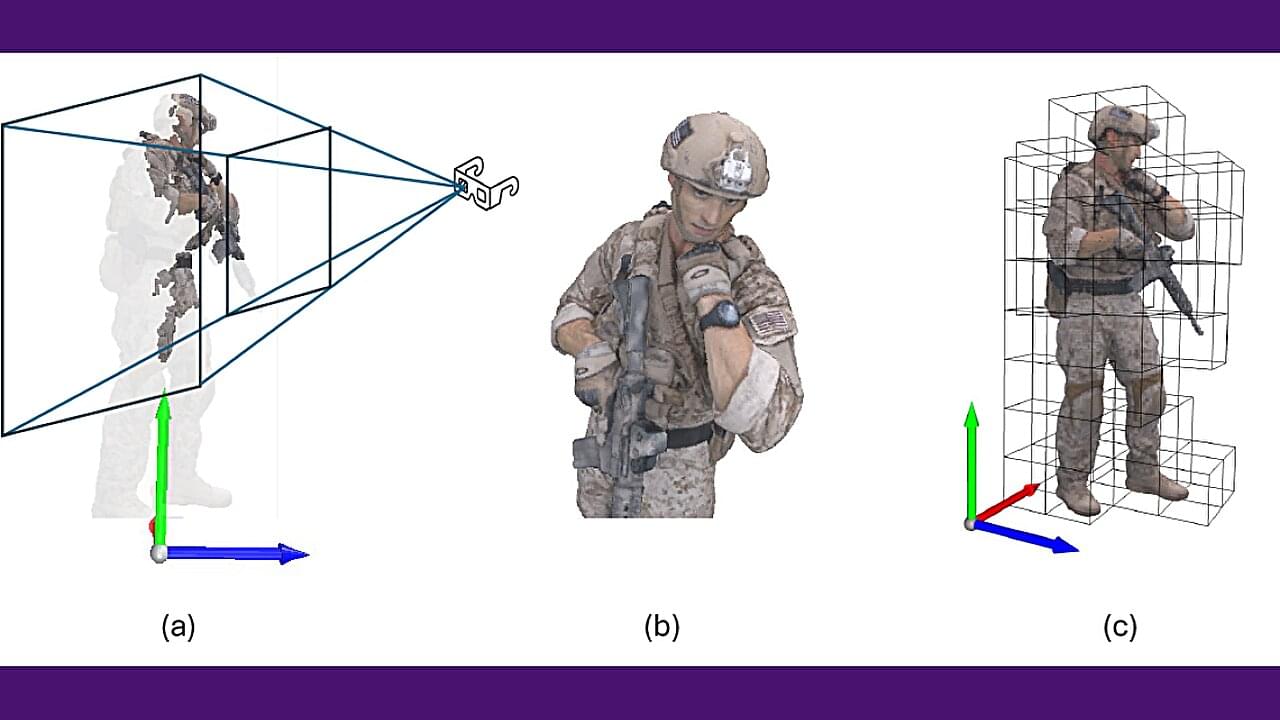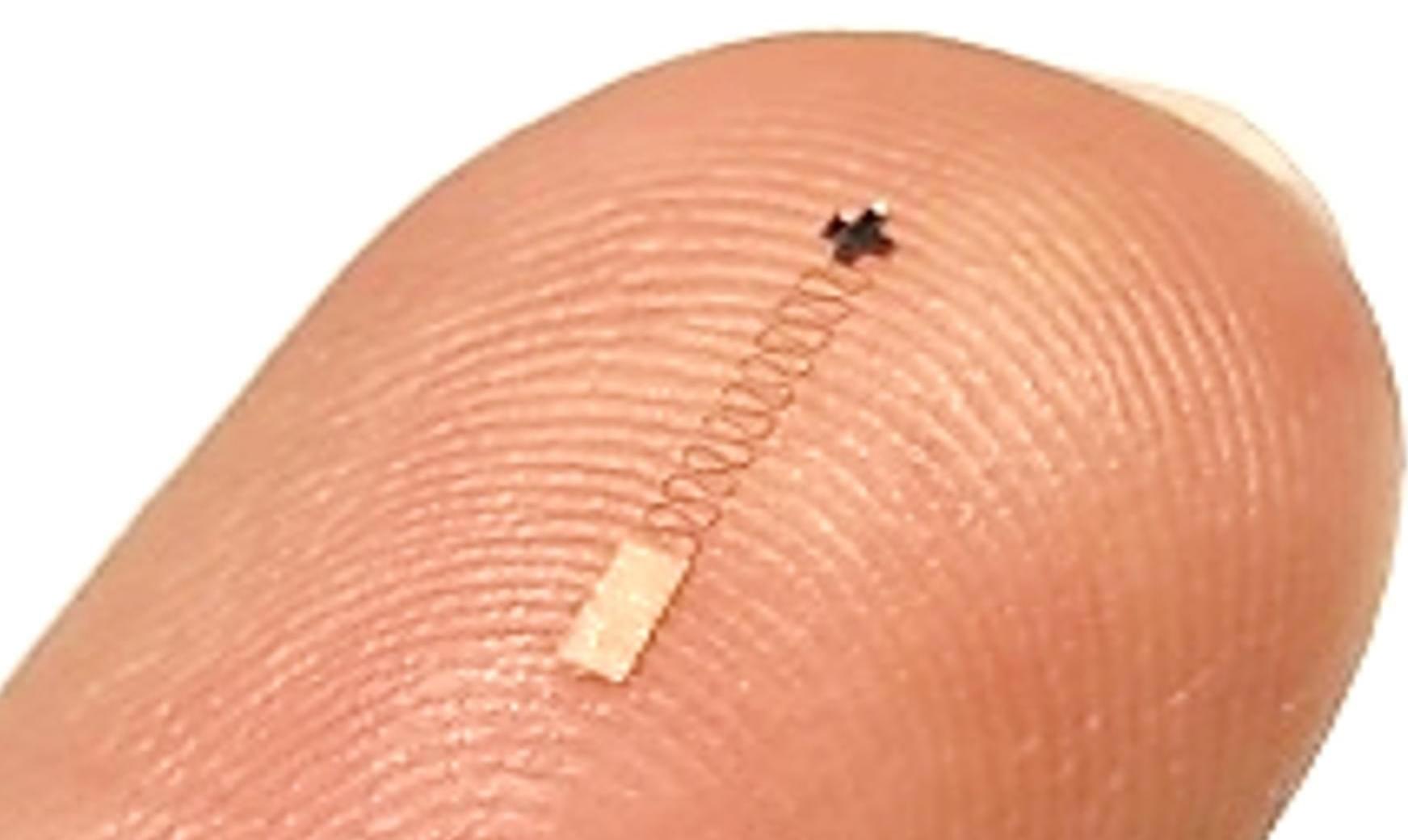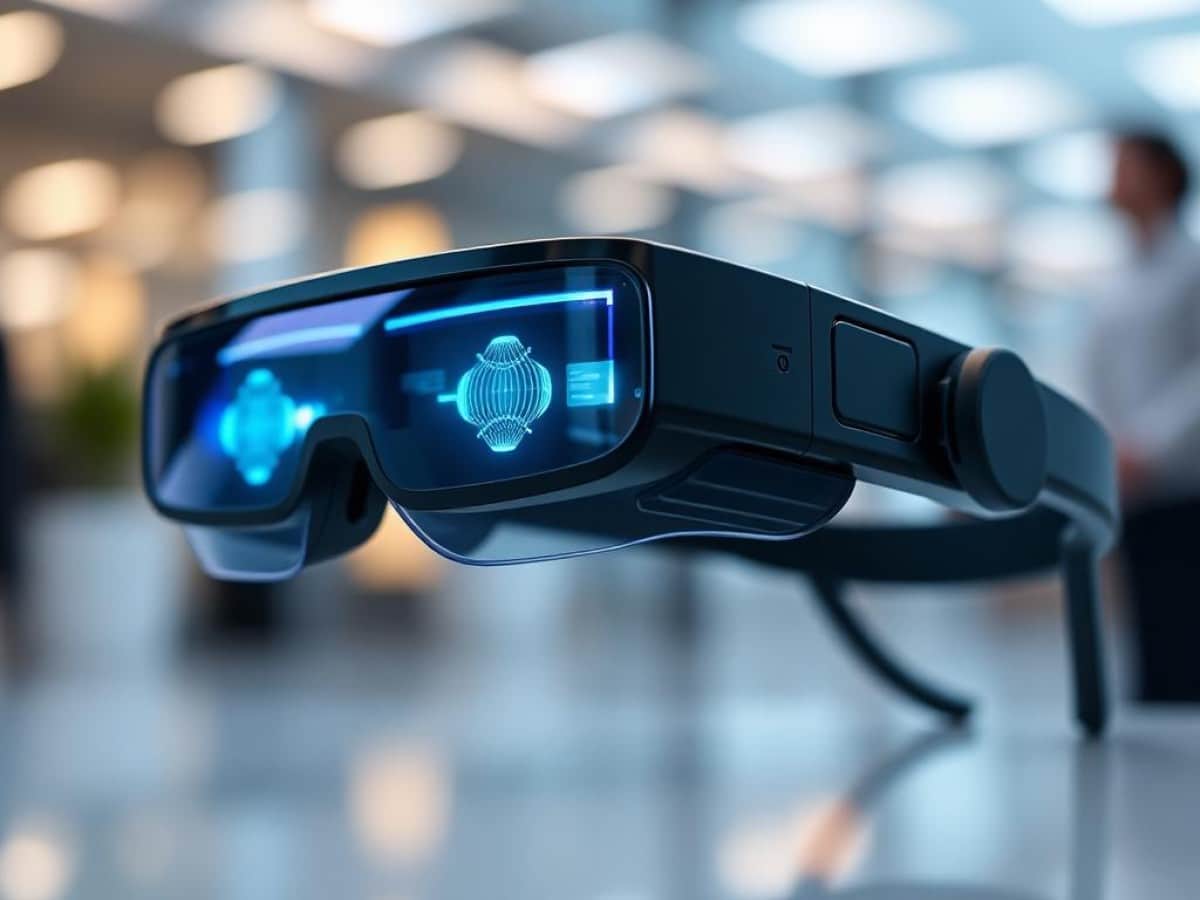At an event in Hangzhou, China, Chinese and French guests simply donned 49-gram Rokid AR glasses and spoke in their own languages while instant subtitles appeared on the lenses, enabling seamless dialogue.
]]>
Meta has laid off employees in the company’s Reality Labs division that is tasked with developing virtual reality, augmented reality and wearable devices.
]]>Human cyborgs are individuals who integrate advanced technology into their bodies, enhancing their physical or cognitive abilities. This fusion of man and machine blurs the line between science fiction and reality, raising questions about the future of humanity, ethics, and the limits of human potential. From bionic limbs to brain-computer interfaces, cyborg technology is rapidly evolving, pushing us closer to a world where humans and machines become one.
Shocking transformation, futuristic nightmare, beyond human limits, man merges with machine, terrifying reality, future is now, ultimate evolution, secret experiments exposed, technology gone too far, sci-fi turns real, mind-blowing upgrade, science fiction no more, unstoppable machine man, breaking human boundaries, dark future ahead, human cyborgs, cyborg technology, cyborg implants, cyborg augmentation, cyborg evolution, cyborg future, cyborg innovations, cyborg advancements, cyborg ethics, cyborg integration, cyborg society, cyborg culture, cyborg development, cyborg research, cyborg science, cyborg engineering, cyborg design, cyborg applications, cyborg trends, cyborg news, cyborg updates, cyborg breakthroughs, cyborg discoveries, cyborg implants, bionic limbs, neural interfaces, prosthetic enhancements, biohacking, cybernetics, exoskeletons, brain-computer interfaces, robotic prosthetics, augmented humans, wearable technology, artificial organs, human augmentation, smart prosthetics, neuroprosthetics, biomechatronics, implantable devices, synthetic biology, transhumanism, bioengineering, nanotechnology, genetic engineering, bioinformatics, artificial intelligence, machine learning, robotics, automation, virtual reality, augmented reality, mixed reality, haptic feedback, sensory augmentation, cognitive enhancement, biofeedback, neurofeedback, brain mapping, neural networks, deep learning, biotechnology, regenerative medicine, tissue engineering, stem cells, gene therapy, personalized medicine, precision medicine, biomedical engineering, medical devices, health tech, digital health, telemedicine, eHealth, mHealth, health informatics, wearable sensors, fitness trackers, smartwatches, health monitoring, remote monitoring, patient engagement, health apps, health data, electronic health records, health analytics, health AI, medical robotics, surgical robots, rehabilitation robotics, assistive technology, disability tech, inclusive design, universal design, accessibility, adaptive technology, human-machine interaction, human-computer interaction, user experience, user interface, UX design, UI design, interaction design, design thinking, product design, industrial design, innovation, technology trends, future tech, emerging technologies, disruptive technologies, tech startups, tech entrepreneurship, venture capital, startup ecosystem, tech innovation, research and development, R&D, scientific research, science and technology, STEM, engineering, applied sciences, interdisciplinary research, academic research, scholarly articles, peer-reviewed journals, conferences, symposiums, workshops, seminars, webinars, online courses, e-learning, MOOCs, professional development, continuing education, certifications, credentials, skills development, career advancement, job market, employment trends, workforce development, labor market, gig economy, freelancing, remote work, telecommuting, digital nomads, coworking spaces, collaboration tools, project management, productivity tools, time management, work-life balance, mental health, wellness, self-care, mindfulness, meditation, stress management, resilience, personal growth, self-improvement, life coaching, goal setting, motivation, inspiration, success stories, case studies, testimonials, reviews, ratings, recommendations, referrals, networking, professional associations, industry groups, online communities, forums, discussion boards, social media, content creation, blogging, vlogging, podcasting, video production, photography, graphic design, animation, illustration, creative arts, performing arts, visual arts, music, literature, film, television, entertainment, media, journalism, news, reporting, storytelling, narrative, communication, public speaking, presentations, persuasion, negotiation, leadership, management, entrepreneurship, business, marketing, advertising, branding, public relations, sales, customer service, client relations, customer experience, market research, consumer behavior, demographics, psychographics, target audience, niche markets, segmentation, positioning, differentiation, competitive analysis, SWOT analysis, strategic planning, business development, growth strategies, scalability, sustainability, corporate social responsibility, ethics, compliance, governance, risk management, crisis management, change management, organizational behavior, corporate culture, diversity and inclusion, team building, collaboration, innovation management, knowledge management, intellectual property, patents, trademarks, copyrights.
]]>
Modern brain–computer interfaces (BCI), utilizing electroencephalograms for bidirectional human–machine communication, face significant limitations from movement-vulnerable rigid sensors, inconsistent skin–electrode impedance, and bulky electronics, diminishing the system’s continuous use and portability. Here, we introduce motion artifact–controlled micro–brain sensors between hair strands, enabling ultralow impedance density on skin contact for long-term usable, persistent BCI with augmented reality (AR). An array of low-profile microstructured electrodes with a highly conductive polymer is seamlessly inserted into the space between hair follicles, offering high-fidelity neural signal capture for up to 12 h while maintaining the lowest contact impedance density (0.03 kΩ·cm−2) among reported articles. Implemented wireless BCI, detecting steady-state visually evoked potentials, offers 96.4% accuracy in signal classification with a train-free algorithm even during the subject’s excessive motions, including standing, walking, and running. A demonstration captures this system’s capability, showing AR-based video calling with hands-free controls using brain signals, transforming digital communication. Collectively, this research highlights the pivotal role of integrated sensors and flexible electronics technology in advancing BCI’s applications for interactive digital environments.
]]>Researchers from Georgia Institute of Technology (Georgia Tech) have developed a microscopic brain sensor which is so tiny that it can be placed in the small gap between your hair follicles on the scalp, slightly under the skin. The sensor is discreet enough not to be noticed and minuscule enough to be worn comfortably all day.
Brain sensors offer high-fidelity signals, allowing your brain to communicate directly with devices like computers, augmented reality (AR) glasses, or robotic limbs. This is part of what’s known as a Brain-Computer Interface (BCI).
]]>
A new approach to streaming technology may significantly improve how users experience virtual reality and augmented reality environments, according to a study from NYU Tandon School of Engineering.
The research—presented in a paper at the 16th ACM Multimedia Systems Conference (ACM MMSys 2025) on April 1, 2025—describes a method for directly predicting visible content in immersive 3D environments, potentially reducing bandwidth requirements by up to 7-fold while maintaining visual quality.
The technology is being applied in an ongoing NYU Tandon project to bring point cloud video to dance education, making 3D dance instruction streamable on standard devices with lower bandwidth requirements.
]]>Without the ability to control infrared light waves, autonomous vehicles wouldn’t be able to quickly map their environment and keep “eyes” on the cars and pedestrians around them; augmented reality couldn’t display realistic 3D displays; doctors would lose an important tool for early cancer detection. Dynamic light control allows for upgrades to many existing systems, but complexities associated with fabricating programmable thermal devices hinder availability.
A new active metasurface, the electrically-programmable graphene field effect transistor (Gr-FET), from the labs of Sheng Shen and Xu Zhang in Carnegie Mellon University’s College of Engineering, enables the control of mid-infrared states across a wide range of wavelengths, directions, and polarizations. This enhanced control enables advancements in applications ranging from infrared camouflage to personalized health monitoring.
“For the first time, our active metasurface devices exhibited the monolithic integration of the rapidly modulated temperature, addressable pixelated imaging, and resonant infrared spectrum,” said Xiu Liu, postdoctoral associate in mechanical engineering and lead author of the paper published in Nature Communications. “This breakthrough will be of great interest to a wide range of infrared photonics, materials science, biophysics, and thermal engineering audiences.”
]]>For over a century, galvanic vestibular stimulation (GVS) has been used as a way to stimulate the inner ear nerves by passing a small amount of current.
We use GVS in a two player escape the room style VR game set in a dark virtual world. The VR player is remote controlled like a robot by a non-VR player with GVS to alter the VR player’s walking trajectory. We also use GVS to induce the physical sensations of virtual motion and mitigate motion sickness in VR.
Brain hacking has been a futurist fascination for decades. Turns out, we may be able to make it a reality as research explores the impact of GVS on everything from tactile sensation to memory.
Misha graduated in June 2018 from the MIT Media Lab where she worked in the Fluid Interfaces group with Prof Pattie Maes. Misha works in the area of human-computer interaction (HCI), specifically related to virtual, augmented and mixed reality. The goal of her work is to create systems that use the entire body for input and output and automatically adapt to each user’s unique state and context. Misha calls her concept perceptual engineering, i.e., immersive systems that alter the user’s perception (or more specifically the input signals to their perception) and influence or manipulate it in subtle ways. For example, they modify a user’s sense of balance or orientation, manipulate their visual attention and more, all without the user’s explicit awareness, and in order to assist or guide their interactive experience in an effortless way.
The systems Misha builds use the entire body for input and output, i.e., they can use movement, like walking, or a physiological signal, like breathing as input, and can output signals that actuate the user’s vestibular system with electrical pulses, causing the individual to move or turn involuntarily. HCI up to now has relied upon deliberate, intentional usage, both for input (e.g., touch, voice, typing) and for output (interpreting what the system tells you, shows you, etc.). In contrast, Misha develops techniques and build systems that do not require this deliberate, intentional user interface but are able to use the body as the interface for more implicit and natural interactions.
Misha’s perceptual engineering approach has been shown to increase the user’s sense of presence in VR/MR, provide novel ways to communicate between the user and the digital system using proprioception and other sensory modalities, and serve as a platform to question the boundaries of our sense of agency and trust.
]]>
An international team of scientists developed augmented reality glasses with technology to receive images beamed from a projector, to resolve some of the existing limitations of such glasses, such as their weight and bulk. The team’s research is being presented at the IEEE VR conference in Saint-Malo, France, in March 2025.
Augmented reality (AR) technology, which overlays digital information and virtual objects on an image of the real world viewed through a device’s viewfinder or electronic display, has gained traction in recent years with popular gaming apps like Pokémon Go, and real-world applications in areas including education, manufacturing, retail and health care. But the adoption of wearable AR devices has lagged over time due to their heft associated with batteries and electronic components.
AR glasses, in particular, have the potential to transform a user’s physical environment by integrating virtual elements. Despite many advances in hardware technology over the years, AR glasses remain heavy and awkward and still lack adequate computational power, battery life and brightness for optimal user experience.
]]>Meta has unveiled the next iteration of its sensor-packed research eyewear, the Aria Gen 2. This latest model follows the initial version introduced in 2020. The original glasses came equipped with a variety of sensors but lacked a display, and were not designed as either a prototype or a consumer product. Instead, they were exclusively meant for research to explore the types of data that future augmented reality (AR) glasses would need to gather from their surroundings to provide valuable functionality.
In their Project Aria initiative, Meta explored collecting egocentric data—information from the viewpoint of the user—to help train artificial intelligence systems. These systems could eventually comprehend the user’s environment and offer contextually appropriate support in daily activities. Notably, like its predecessor, the newly announced Aria Gen 2 does not feature a display.
Meta has highlighted several advancements in Aria Gen 2 compared to the first generation:
]]>


